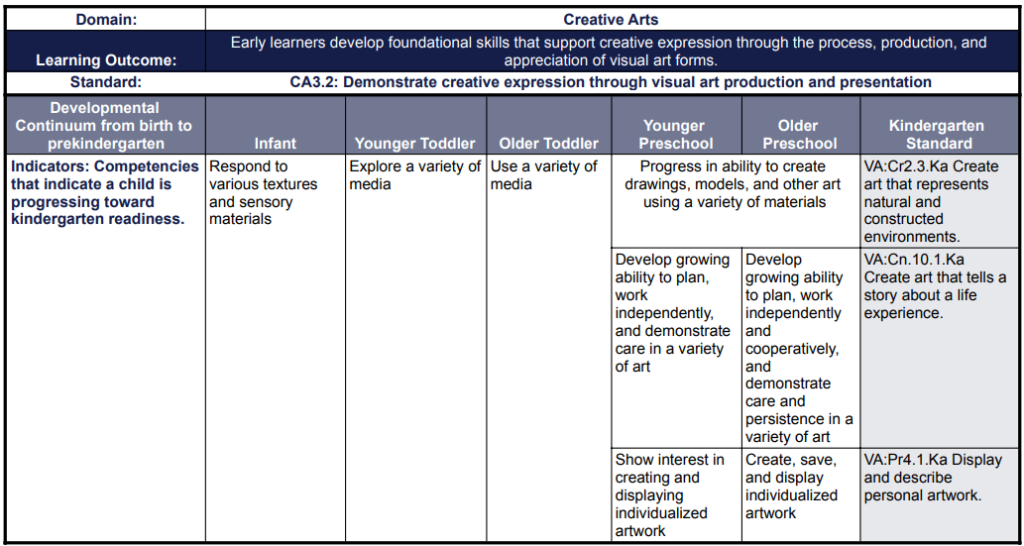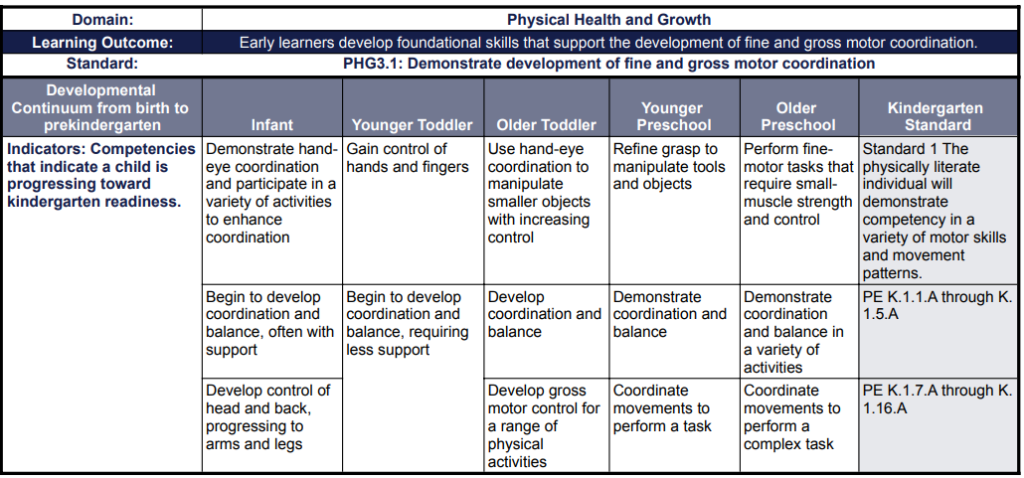Family child care providers are more likely than most early childhood educators to work with mixed age groups, which can broaden the differences in abilities to plan for. But all children develop at different rates, with different interests and abilities, so even when an activity is only for three-year-olds, the particular three-year-olds who are participating are going to determine the types of adaptations and levels that are planned for.
When writing a lesson plan, including adaptations for children who need more assistance or more challenging stimulation can seem daunting at first, but soon will become second nature. Consider the following factors when planning appropriate modifications– we’ll test it out on a planned activity after:
- Safety first! Are the children using risky tools (hammers/nails, hot glue, etc.) that could be misused if a child’s attention, impulse control, or motor skills are not at a certain level? Consider partnered work, having one “helper,” adapting tools (loop scissors instead of regular scissors, tacky glue instead of hot glue), or working hand-over-hand.
- Look at your goal for the activity: have any of the children already accomplished it? Is it too far out of the zone of proximal development for some children to attempt? Are there smaller steps those children can take to meet that goal?
- What can children who finish early do? Have a plan for the ones who lose interest early as well as the ones who want to keep working and experimenting.
SAMPLE ACTIVITY & INDIVIDUALIZED ADAPTATIONS:
Audience: Children 2-5 years old
Activity: Tissue paper collage on contact paper
Learning Outcomes (from IN Early Learning Standards):
Adaptations: Children will be offered pencils and loop scissors, as well as traditional safety scissors, to create and cut out designs from tissue paper. Children will be encouraged to tear the paper by hand if not yet able to use scissors consistently. Children may work with the contact paper at easels, on the table, or on trays on the floor to allow optimal body positioning. Children can work until finished, and those who finish first/early may wash up and move on to open centers for free play.
Like most other states, Indiana has published Early Learning Standards to help early childhood educators understand what children should be learning as they grow. This document can be intimidating at first for providers who want to use it for their curriculum planning. In this three-part series, we will look at:
- Finding what learning is already naturally happening in your environment
- Creating a lesson plan to address learning content that may not be present
- Sharing with families how and what children are learning in your program.
This series is designed to be brief; each video is only about five minutes long and will help providers identify meaningful learning experiences in their environments.
While there are many places to buy curriculum for early childhood programs, the most beneficial learning experiences for children are planned by the people who know them and their abilities and interests.
Starting with children’s interests, and then seeing the skills that can be developed within those interests, is at the heart of a lesson plan. If the most popular toys among the children is the train set, how can that expand through activities that will support their learning and development across domains?
Counting the trains out loud and comparing the length of two or more trains will introduce children to foundational math skills of comparison and number sense.
Adding books about trains to your library and finding some train songs (or adding trains to songs they already know– “The Wheels on the Train”, anyone?) will expose children to new vocabulary and give them opportunities to deepen their understanding of what a train is. Don’t limit yourself to fiction, either– many young children are absolutely fascinated by books with real pictures that explain how the mechanics work.
Painting with train wheels can be a thrill for young children! Running the trains through paint and over paper allows them to see how a wheel moves and understand the cause and effect of paint drying out and no longer transferring to paper, then refreshing the paint and painting smooth lines again.
Of course, trains are only one common interest young children have. These same principles apply, whether they’re exploring spiders, puppets, or mermaids. Noticing what children are learning and using academic skills as the tools that they are to help advance childrens’ ideas and understanding will prepare them to use these skills as they grow.
Academic skills are tools that we want children to have and be able to use. Just like a quizzing a child on how to use a hammer, offering worksheets, and reading books won’t teach that child how to use a hammer, teaching academic skills without opportunities to hold, manipulate, and experiment with them won’t offer children competence and expertise.
Reflection Questions
What common interests are you seeing in the children you work with? What themes are recurring?
What resources can you use to determine the academic skills children can acquire through their play and through interactions with adults?
A curriculum is everything you do with children throughout the day. This includes routines, guided activities as well as available activities, conversations, media, and more. There are many ways to create a curriculum that engages children and builds on their interests while meeting their developmental needs and state standards.


